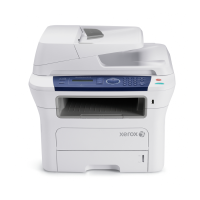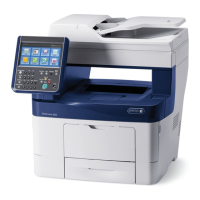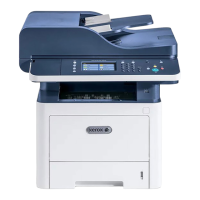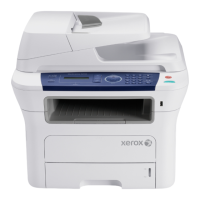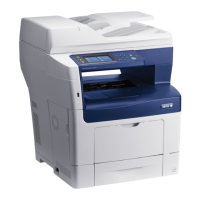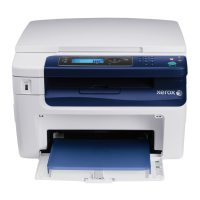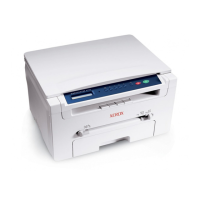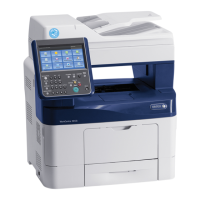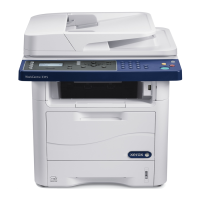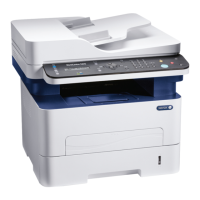April 2010
vi
Phaser 3635MFP/WorkCentre 3550
Safety Precautions
Introduction
Safety Precautions
Follow these safety, ESD, and servicing precautions to prevent personal injury and equipment
damage.
1. Ensure that all built in protective devices are in place. Restore any missing protective
shields.
2. Make sure there are no cabinet openings through which people, particularly children,
might insert fingers or objects and contact dangerous voltages.
3. When re-installing chassis and assemblies, be sure to restore all protective devices,
including control knobs and compartment covers.
4. Design alteration warning; never alter or add to the mechanical or electrical design of this
equipment, such as auxiliary connectors, etc. Such alterations and modifications will void
the manufacturers warranty.
5. Components, parts, and wiring that appear to have overheated or are otherwise damaged
should be replaced with parts which meet the original specifications. Always determine
the cause of damage or overheating, and correct any potential hazards.
6. Observe the original harness routing, especially near sharp edges, AC, and high voltage
power supplies. Always inspect for pinched, out-of-place, or frayed wiring. Do not change
the spacing between components and the printed circuit board.
7. Product safety notice; some electrical and mechanical parts have special safety related
characteristics which might not be obvious from visual inspection. These safety features
and the protection they provide could be lost if a replacement component differs from the
original. This holds true, even though the replacement may be rated for higher voltage,
wattage, etc.
8. Use only replacement components that have the same ratings, especially for flame resis-
tance and dielectric specifications. A replacement part that does not have the same safety
characteristics as the original may create shock, fire, or other safety hazards.
ESD Precautions
1. Certain semiconductor devices can be easily damaged by static electricity. Such compo-
nents are commonly called ‘Electrostatically Sensitive (ES) Devices’, or ESDs. Examples
of typical ESDs are: integrated circuits, some field effect transistors, and semiconductor
‘chip’ components.
The techniques outlined below should be followed to help reduce the incidence of compo-
nent damage caused by static electricity.
CAUTION
Ensure no power is applied to the chassis or circuit, and observe all other safety precautions.
2. Immediately before handling a semiconductor component or semiconductor-equipped
assembly, discharge any electrostatic charge on your body by touching a known earth
ground. Alternatively, employ a commercially available wrist strap device, which should
be removed for your personal safety reasons prior to applying power to the unit under
test.
3. After removing an electrical assembly equipped with ESDs, place the assembly on a con-
ductive surface, such as aluminum or copper foil, or conductive foam, to prevent electro-
static charge buildup in the vicinity of the assembly.
4. Use only a grounded tip soldering iron to solder or desolder ESDs.
Use only an ‘anti-static’ solder removal device. Some solder removal devices not classi-
fied as ‘anti-static’ can generate electrical charges sufficient to damage ESDs.
5. Do not use freon propelled chemicals. When sprayed, these can generate electrical
charges sufficient to damage ESDs.
6. Do not remove a replacement ESD from its protective packaging until immediately before
installing it. Most replacement ESDs are packaged with all leads shorted together by con
-
ductive foam, aluminum foil, or a comparable conductive material.
7. Immediately before removing the protective shorting material from the leads of a replace-
ment ESD, touch the protective material to the chassis or circuit assembly into which the
device will be installed.
8. Maintain continuous electrical contact between the ESD and the assembly into which it
will be installed, until completely plugged or soldered into the circuit.
9. Minimize body motion when handling unpacked replacement ESDs. Normal motions,
such as the brushing together of clothing fabric and lifting a foot from a carpeted floor, can
generate static electricity sufficient to damage an ESD.
Lithium Battery Precautions
1. Exercise caution when replacing a lithium battery. There could be a danger of explosion
and subsequent operator injury and/or equipment damage if incorrectly installed.
2. Be sure to replace the battery with the same or equivalent type recommended by the
manufacturer.
3. Lithium batteries contain toxic substances and should not be opened, crushed, or burned
for disposal.
4. Dispose of used batteries according to the manufacture’s instructions.
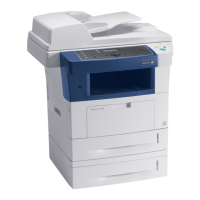
